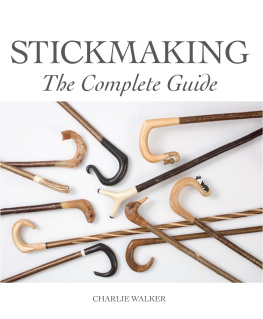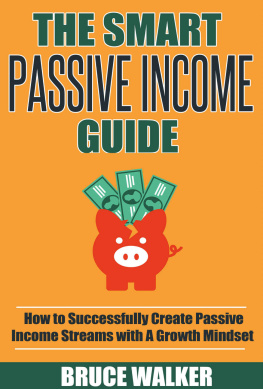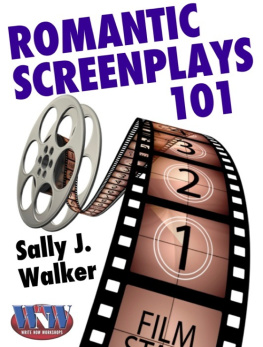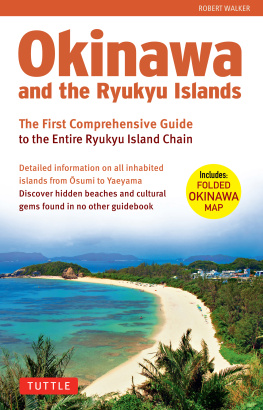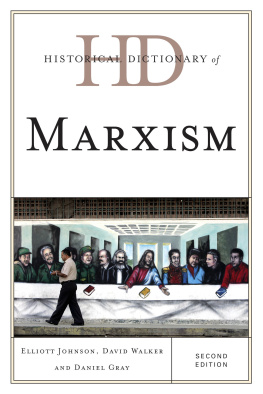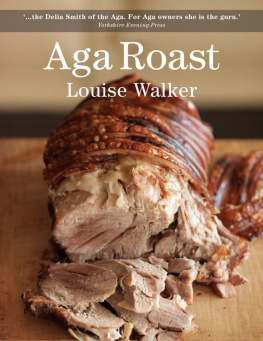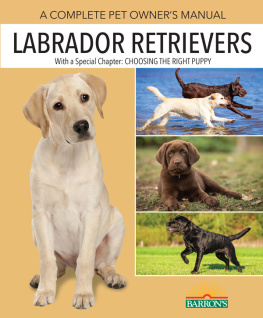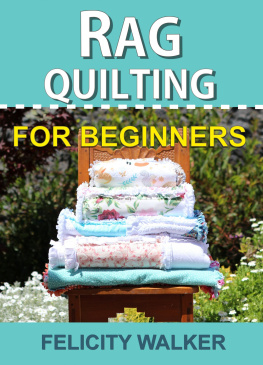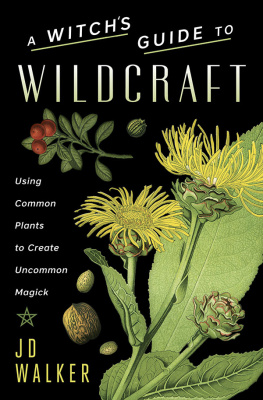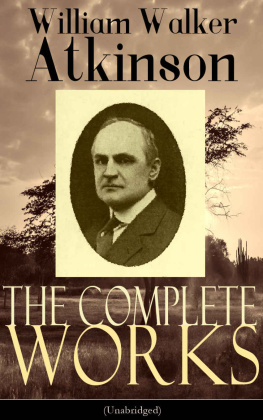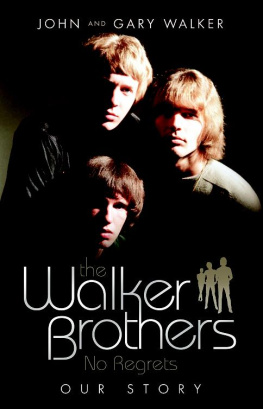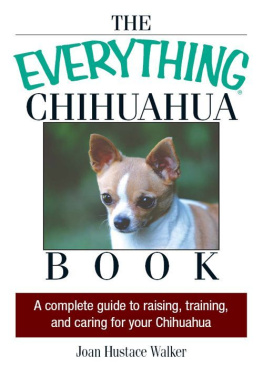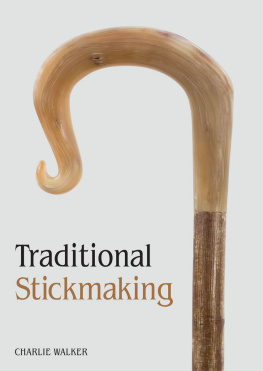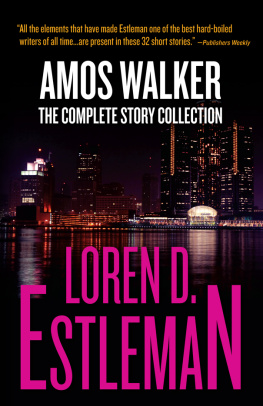Walker - Stickmaking : the complete guide
Here you can read online Walker - Stickmaking : the complete guide full text of the book (entire story) in english for free. Download pdf and epub, get meaning, cover and reviews about this ebook. City: Ramsbury, year: 2018, publisher: The Crowood, genre: Home and family. Description of the work, (preface) as well as reviews are available. Best literature library LitArk.com created for fans of good reading and offers a wide selection of genres:
Romance novel
Science fiction
Adventure
Detective
Science
History
Home and family
Prose
Art
Politics
Computer
Non-fiction
Religion
Business
Children
Humor
Choose a favorite category and find really read worthwhile books. Enjoy immersion in the world of imagination, feel the emotions of the characters or learn something new for yourself, make an fascinating discovery.
- Book:Stickmaking : the complete guide
- Author:
- Publisher:The Crowood
- Genre:
- Year:2018
- City:Ramsbury
- Rating:5 / 5
- Favourites:Add to favourites
- Your mark:
- 100
- 1
- 2
- 3
- 4
- 5
Stickmaking : the complete guide: summary, description and annotation
We offer to read an annotation, description, summary or preface (depends on what the author of the book "Stickmaking : the complete guide" wrote himself). If you haven't found the necessary information about the book — write in the comments, we will try to find it.
Stickmaking : the complete guide — read online for free the complete book (whole text) full work
Below is the text of the book, divided by pages. System saving the place of the last page read, allows you to conveniently read the book "Stickmaking : the complete guide" online for free, without having to search again every time where you left off. Put a bookmark, and you can go to the page where you finished reading at any time.
Font size:
Interval:
Bookmark:
STICKMAKING
The Complete Guide
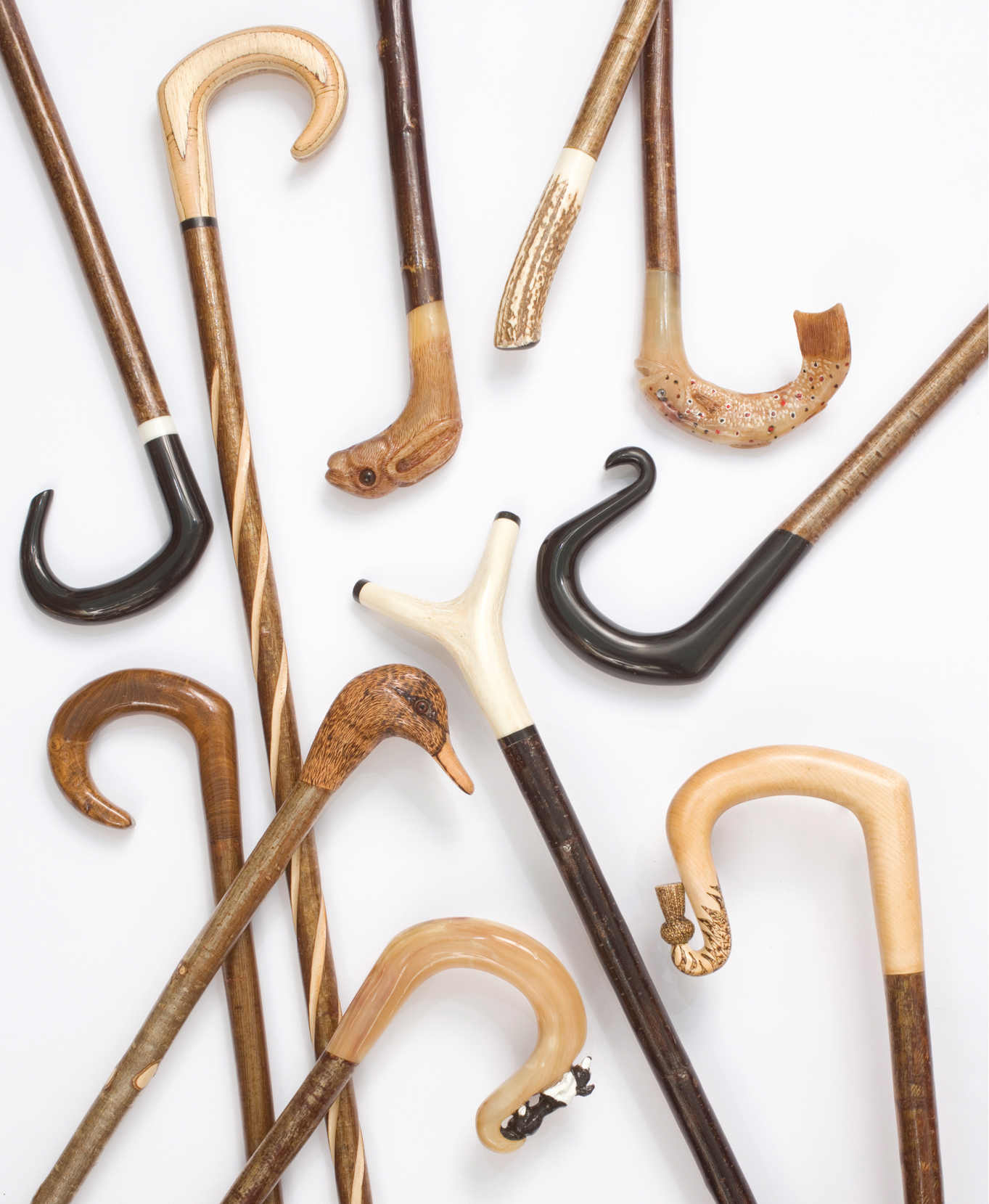
STICKMAKING
The Complete Guide
CHARLIE WALKER

THE CROWOOD PRESS

First published in 2018 by
The Crowood Press Ltd
Ramsbury, Marlborough
Wiltshire SN8 2HR
www.crowood.com
This e-book first published in 2018
Charlie Walker 2018
All rights reserved. This e-book is copyright material and must not be copied, reproduced, transferred, distributed, leased, licensed or publicly performed or used in any way except as specifically permitted in writing by the publishers, as allowed under the terms and conditions under which it was purchased or as strictly permitted by applicable copyright law. Any unauthorised distribution or use of thistext may be a direct infringement of the authors and publishers rights, and those responsible may be liable in law accordingly.
British Library Cataloguing-in-Publication Data
A catalogue record for this book is available from the British Library.
ISBN 978 1 78500 414 8
Frontispiece: Colin Mills


Contents

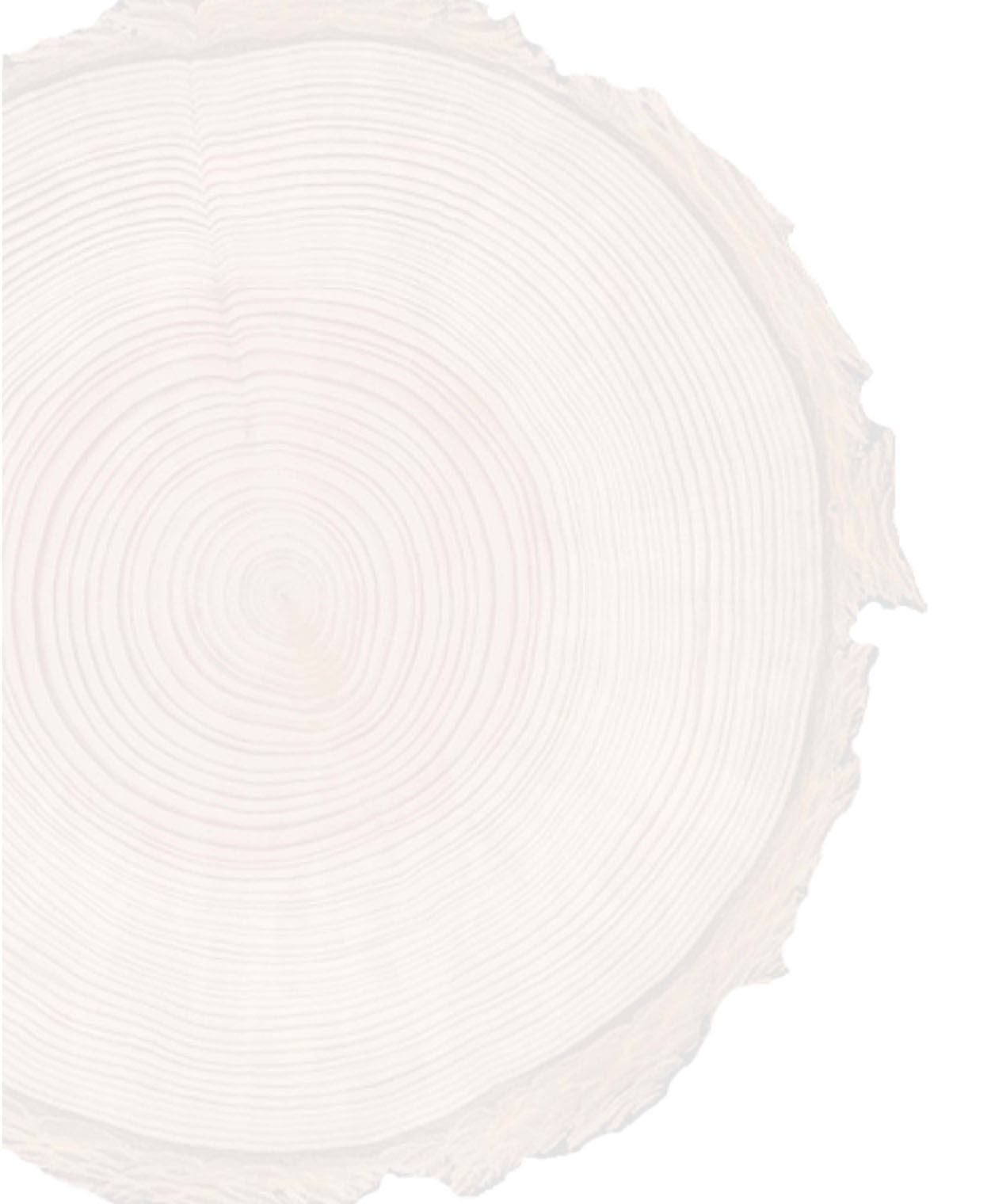
Introduction
I have been very fortunate to receive a lot of help from stickmakers around the UK who have willingly given me their advice, time and encouragement. In this book, it is my intention to pass on some of the information that I have gained about stickmaking to any reader who is interested in this absorbing pastime and would like to make a range of walking or working sticks using different materials and techniques.
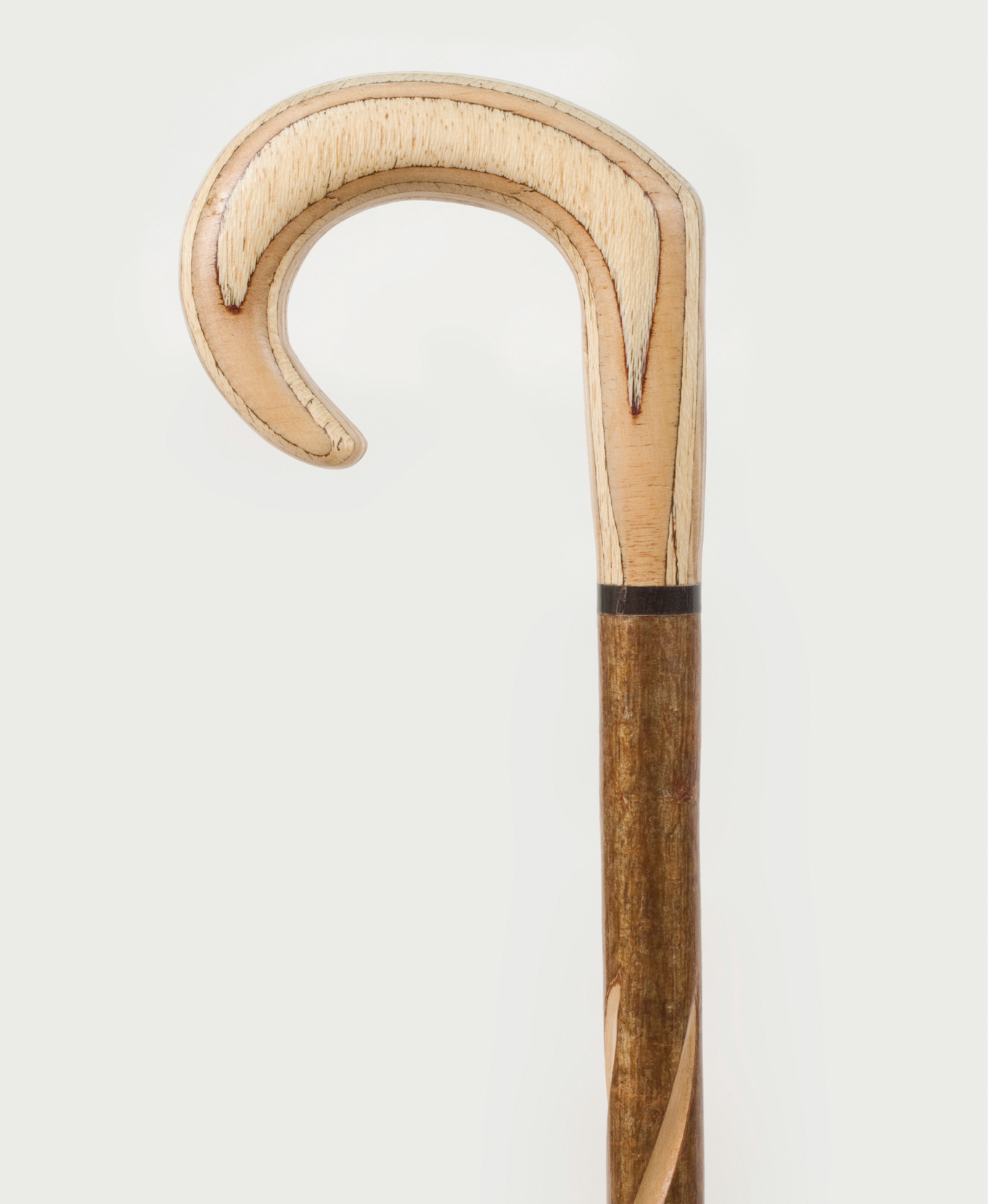
A plywood handle on spiral shank - Photo by Colin Mills
The book provides extensive advice and information about the materials, equipment and tools required to make a variety of sticks from timber, antler and horn. The early chapters provide general information about stick types and shapes, advice on tools and equipment and where and how to get ideas and inspiration on stickmaking. The book continues with a list of timbers that are often used for stickmaking. Many stickmakers prefer to collect their own timber to make handles and shanks; guidance is given on cutting and collecting green timber and methods of storing and protecting the timber from pests. A chapter is dedicated to straightening shanks; it describes how to make simple jigs and equipment to enable bent sticks to be straightened. One of the most important aspects of making good-quality walking and working sticks is creating strong and reliable joints between the handle and shank, but the most essential part is fitting a ferrule onto the tip that will protect the stick for many years. Several jointing methods are detailed which will provide the reader with some options for making first-class joints for various types of sticks.
There are several projects for the reader to work on using step-by-step guides that describe the processes and techniques used, which are supported by numerous photographs. Each stickmaking chapter begins by making plain versions and progresses through to making more complex sticks, culminating in using a variety of methods to decorate and enhance the sticks. In order to avoid too much duplication, some of the repetitive steps required when making the featured sticks have been avoided; however most of the techniques and methods that I use are included within the various projects featured throughout the book.
Some guidance is given on exhibiting and competing in club and national competitions and gives pointers to some aspects an experienced judge will be looking for in a prize-winning stick. The book concludes with a short tribute to one of the very best stickmakers I had the pleasure to know; Gordon Flintoft, and includes pictures of some of his excellent sticks.
Apart from Gordon, the sticks featured in this guide have been made by the author using the materials, tools and equipment described throughout the book.
The equipment and methods used here are based on tried and tested designs and methods that have been and continue to be used by many stickmakers throughout the country. Some stickmakers use different designs of presses to bulk sheep and cow horn that work well for them, others may use different manufacturers and types of tools. There is an abundance of tools, timbers, adhesives and finishing products to choose from, however stickmaking follows a few basic principles and methods that are described throughout the book. There is no right or wrong way of making a stick but there are expectations and standards we should all strive to maintain when making sticks for others to use.
I hope you enjoy your stickmaking and find the information in this book helpful.
Charlie Walker
Chapter 1
Fundamental Information
Two traditional types of handles that are regularly used in stickmaking are shown in the sketches; the first is a shepherds crook shape and is often referred to as a nose-out handle. The second shape is a nose-in handle, used regularly for walking and commonly known as a market stick. Both the handles are drawn full size and the dimensions replicate a finished handle, enabling readers to make their own templates of the shapes. The sketches also include a hatched former reproducing the inside shape of the handles, which is useful for anyone wishing to bend and shape a horn. The parts identified in the sketches are used throughout the book to describe some of the steps used when making most styles of handles. The full-size patterns are intended to be used as guidelines for making handles; the finished size, appearance and shape of any handle is decided by the maker, who may well produce variations of the examples. The two most popular methods of fixing handles onto shanks are shown in the sketches; the first is using a joint cut directly onto a shank, which is commonly called a peg or dowel joint, and the second is a stud joint using threaded rod; both these joints are featured in the book. Shepherds crooks are often joined onto a shank using an angled joint rather than a flat joint. The reason an angled joint is used is that it is less prone to twisting on a shank when used as a working crook to catch and hold a sheep. Examples of angled joints are shown in later chapters. Other jointing methods that allow stick handles to be removed or replaced are also included in later chapters. A very important joint is the one used to fit a ferrule on the tip of the shank to protect the stick from abnormal wear and tear and is described in detail later.
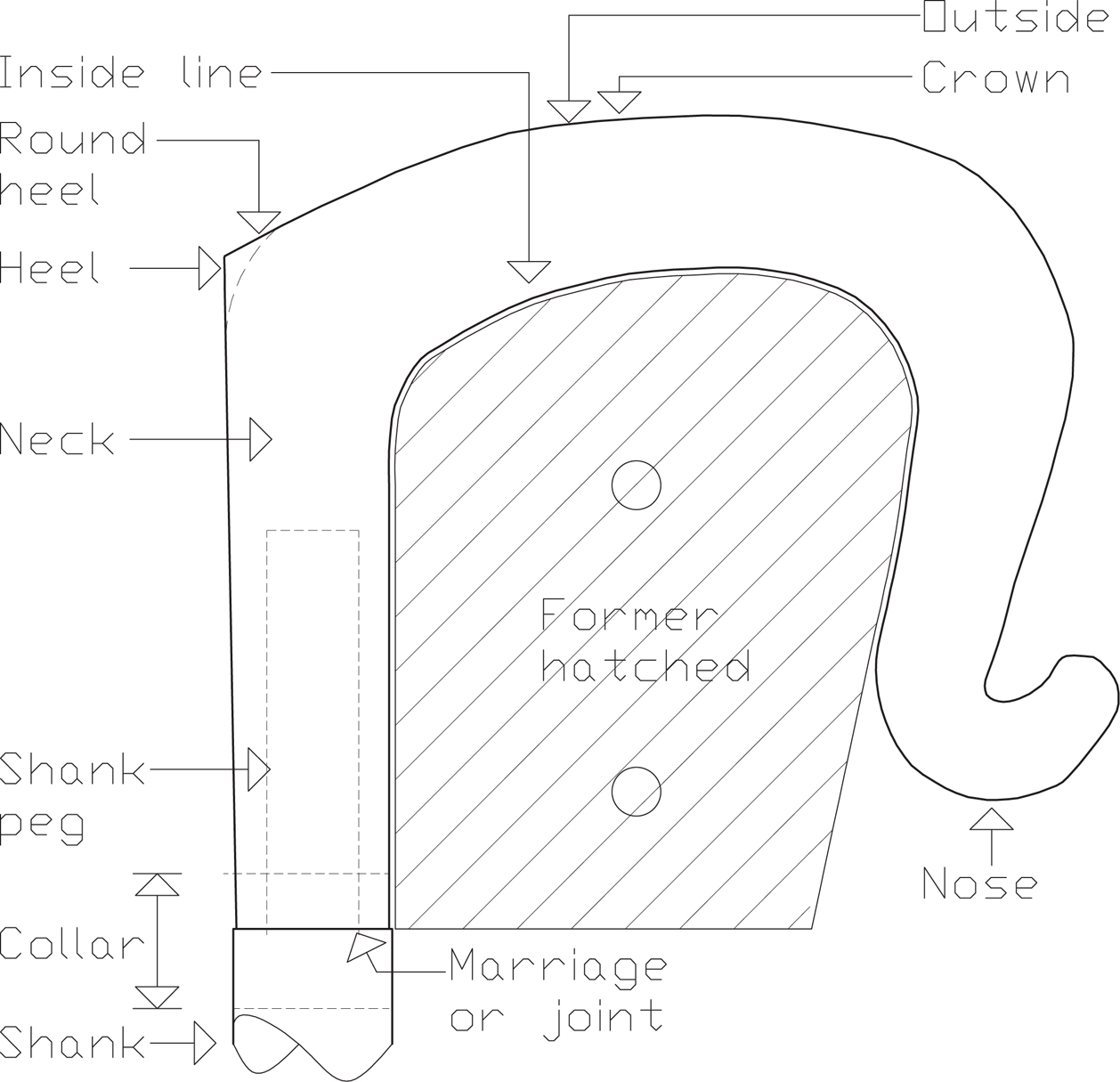
Sketch of a shepherds crook
Collars are used between the handle and shank for two principal reasons; the first is to strengthen this crucial joint and the second is to provide a means of decorating a stick. Collars can be made from horn, timber and metals such as brass, nickel or silver. A well-fitted collar can satisfy both of the principal purposes of strength and decoration. The ideal position when fitting a collar to strengthen the joint is shown on the sketch. Occasionally decorative collars are added after the stick is made, the collar is simply slipped up the shank until it is a tight fit onto the handle or shank; this method is not recommended. Strong, close-fitting joints are one of the most important aspects of making goodquality and serviceable sticks.
Next pageFont size:
Interval:
Bookmark:
Similar books «Stickmaking : the complete guide»
Look at similar books to Stickmaking : the complete guide. We have selected literature similar in name and meaning in the hope of providing readers with more options to find new, interesting, not yet read works.
Discussion, reviews of the book Stickmaking : the complete guide and just readers' own opinions. Leave your comments, write what you think about the work, its meaning or the main characters. Specify what exactly you liked and what you didn't like, and why you think so.

